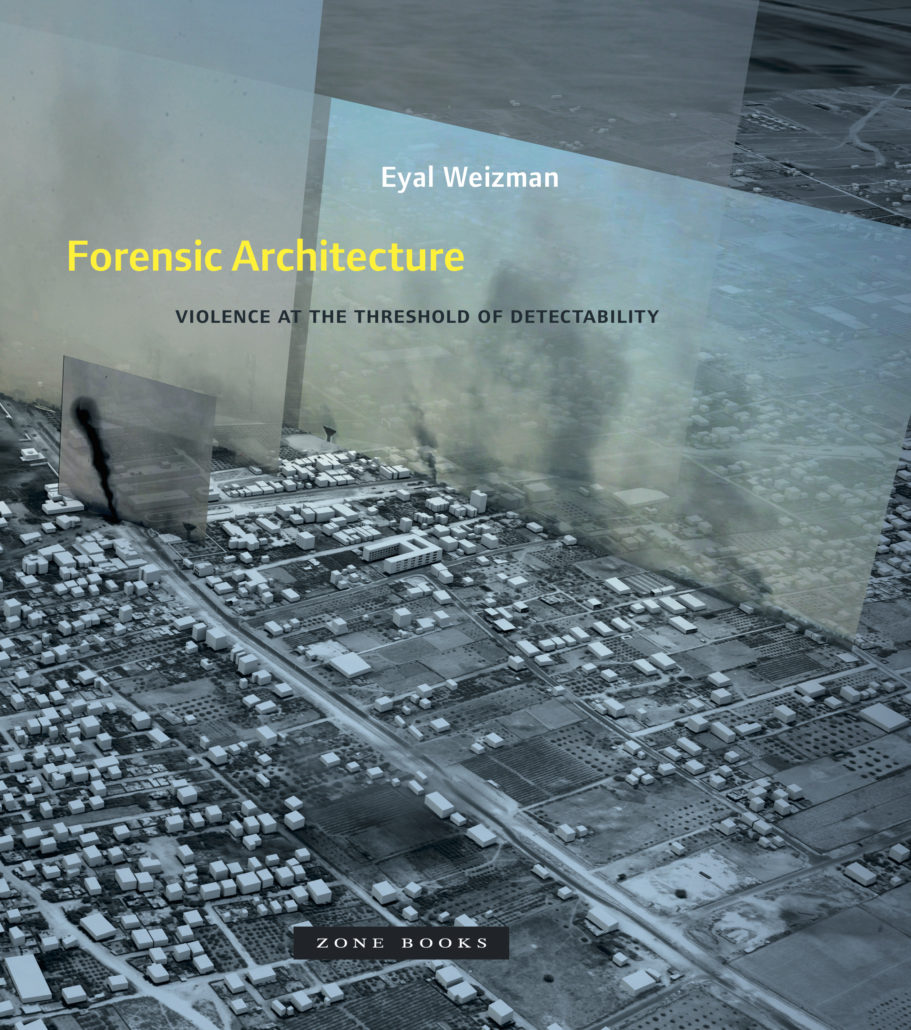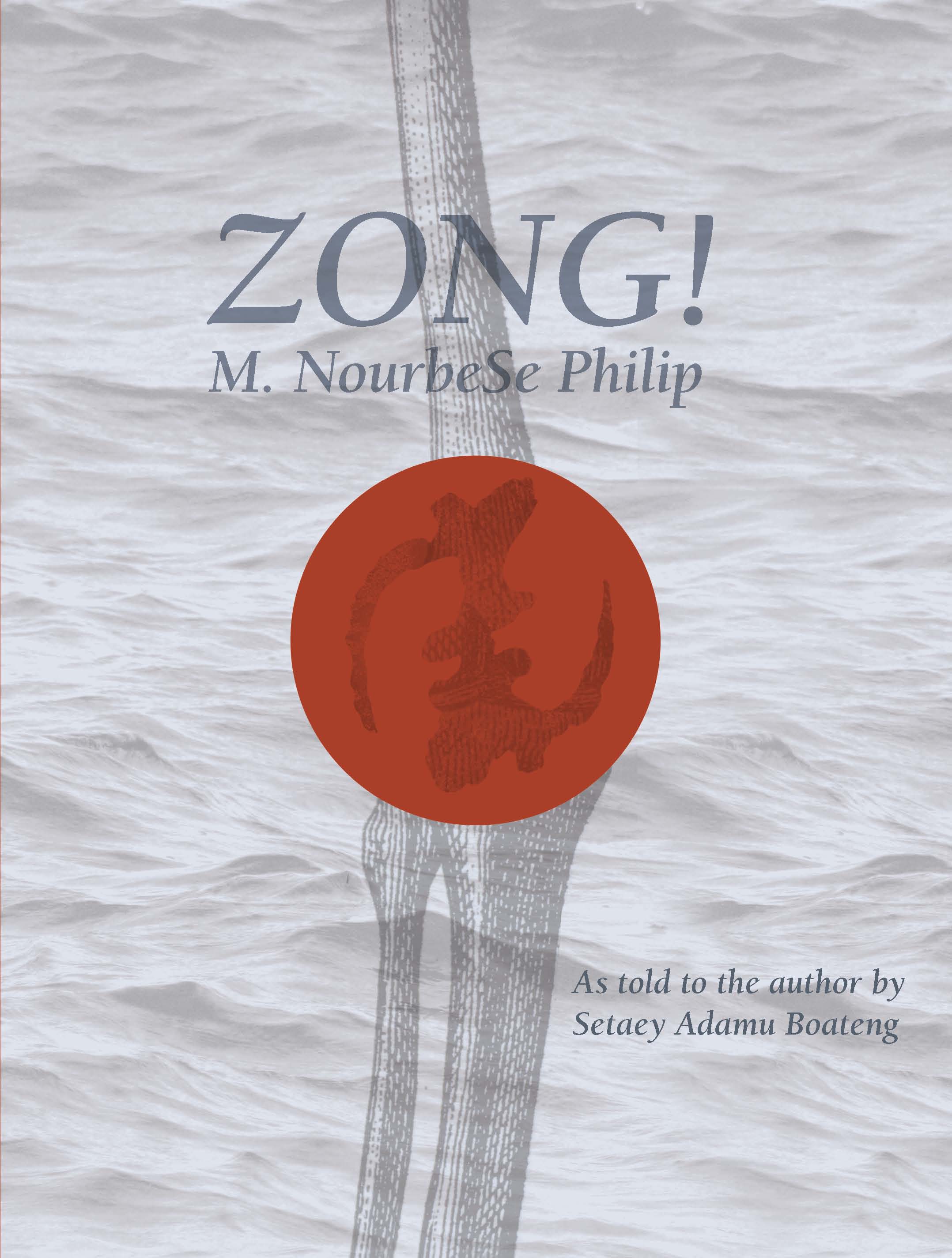Eyal Weizman: Forensic Architecture: Violence at the Threshold of Detectability (2017)
Filed under book | Tags: · anthropology, architecture, forensics, human rights, israel, law, palestine, politics, violence, war

“In recent years, a little-known research group named Forensic Architecture began using novel research methods to undertake a series of investigations into human rights abuses. Today, the group provides crucial evidence for international courts and works with a wide range of activist groups, NGOs, Amnesty International, and the UN.
Beyond shedding new light on human rights violations and state crimes across the globe, Forensic Architecture has also created a new form of investigative practice that bears its name. The group uses architecture as an optical device to investigate armed conflicts and environmental destruction, as well as to cross-reference a variety of evidence sources, such as new media, remote sensing, material analysis, witness testimony, and crowd-sourcing.
In Forensic Architecture, Eyal Weizman, the group’s founder, provides, for the first time, an in-depth introduction to the history, practice, assumptions, potentials, and double binds of this practice. The book includes an extensive array of images, maps, and detailed documentation that records the intricate work the group has performed.
Included in this volume are case studies that traverse multiple scales and durations, ranging from the analysis of the shrapnel fragments in a room struck by drones in Pakistan, the reconstruction of a contested shooting in the West Bank, the architectural recreation of a secret Syrian detention center from the memory of its survivors, a blow-by-blow account of a day-long battle in Gaza, and an investigation of environmental violence and climate change in the Guatemalan highlands and elsewhere.
Weizman’s Forensic Architecture, stunning and shocking in its critical narrative, powerful images, and daring investigations, presents a new form of public truth, technologically, architecturally, and aesthetically produced. Their practice calls for a transformative politics in which architecture as a field of knowledge and a mode of interpretation exposes and confronts ever-new forms of state violence and secrecy.”
Publisher Zone Books, New York, 2017
ISBN 9781935408864, 1935408860
355 pages
Reviews: Regine Debatty (We Make Money Not Art, 2017), Adam Rothstein (New Scientist, 2017), Sława Harasymowicz (Journal of Visual Culture, 2017), David Huber (Artforum, 2017), Joseph Confavreux (Mediapart, 2017, FR), Felix Bazalgette (New York Review of Books, 2018), Martina Tazzioli (Radical Philosophy, 2018), Noah Chasin (Springerin, 2018), Bernard Hay (Review 31, 2018), Anna Altman (n+1, 2018), Viktoriya Yeretska (BauNetz, 2017, DE), Erick Villagomez (Spacing, 2017), Andreas Petrossiants (Brooklyn Rail, 2018).
PDF (31 MB)
Comment (0)Heath Bunting: How to Build a New Legal Identity (2014)
Filed under booklet | Tags: · database, identity, law

“A close look at Heath Bunting’s work and the workshop in Athens. Heath Bunting is an artist whose work takes shape through various forms of action, documentation and visualization. By breaking the barriers between art and everyday life, Bunting gives priority to information and raw action. The present publication explores Bunting’s work through different aspects and constitutes a documentation of the event that took place in Athens on the 4th and 5th of May, 2012 at Frown project space.”
Publisher Frown Publishing, Athens
Creative Commons BY-NC-SA 4.0 International License
ISBN 9786188086302
[52] pages
via publisher
M. NourbeSe Philip: Zong! (2008)
Filed under fiction | Tags: · archive, law, memory, poetry, slavery

“A haunting lifeline between archive and memory, law and poetry
In November, 1781, the captain of the slave ship Zong ordered that some 150 Africans be murdered by drowning so that the ship’s owners could collect insurance monies. Relying entirely on the words of the legal decision Gregson v. Gilbert—the only extant public document related to the massacre of these African slaves—Zong! tells the story that cannot be told yet must be told. Equal parts song, moan, shout, oath, ululation, curse, and chant, Zong! excavates the legal text. Memory, history, and law collide and metamorphose into the poetics of the fragment. Through the innovative use of fugal and counterpointed repetition, Zong! becomes an anti-narrative lament that stretches the boundaries of the poetic form, haunting the spaces of forgetting and mourning the forgotten.”
Publisher Wesleyan University Press, Middletown, CT, and Mercury Press, Toronto, 2008
Wesleyan Poetry series
ISBN 9780819568762, 0819568767
xii+211 pages
Reviews: Tyrone Williams (African Am Rev, 2009), Helen Klonaris (sx salon, 2011).
Commentary: Fred Wah (Jacket2, 2013), Janet Neigh, Phanuel Antwi and Veronica Austen, M. NourbeSe Philip, Evie Shockley, Mecca Jamilah Sullivan (Jacket2, 2013), Jenny Sharpe (Interventions, 2014).
Interview: Paul Watkins (Toronto Rev Books, 2014).
Companion website
Author
Publisher
WorldCat
PDF
Philip reading from Zong! (audio, 2007-2016)

